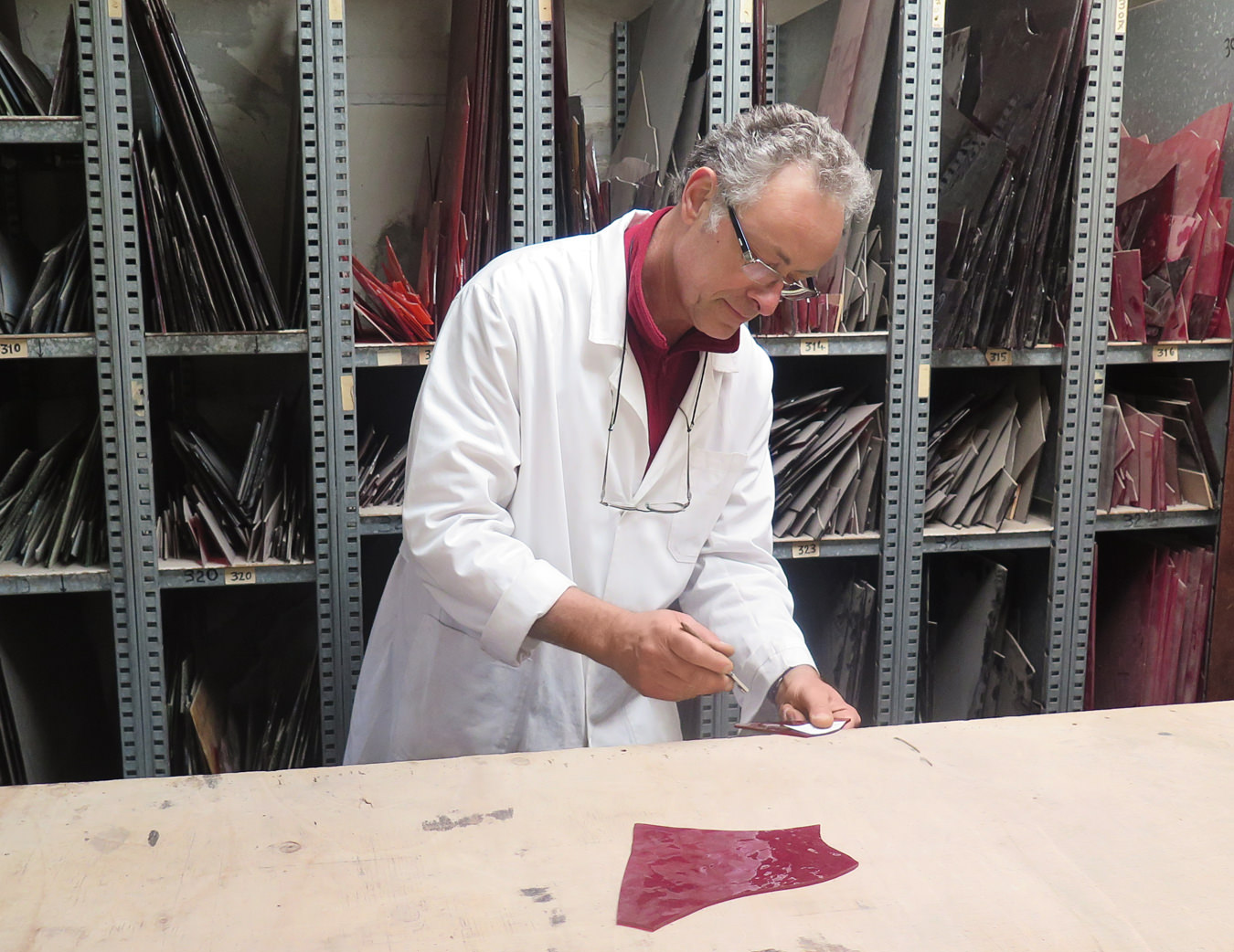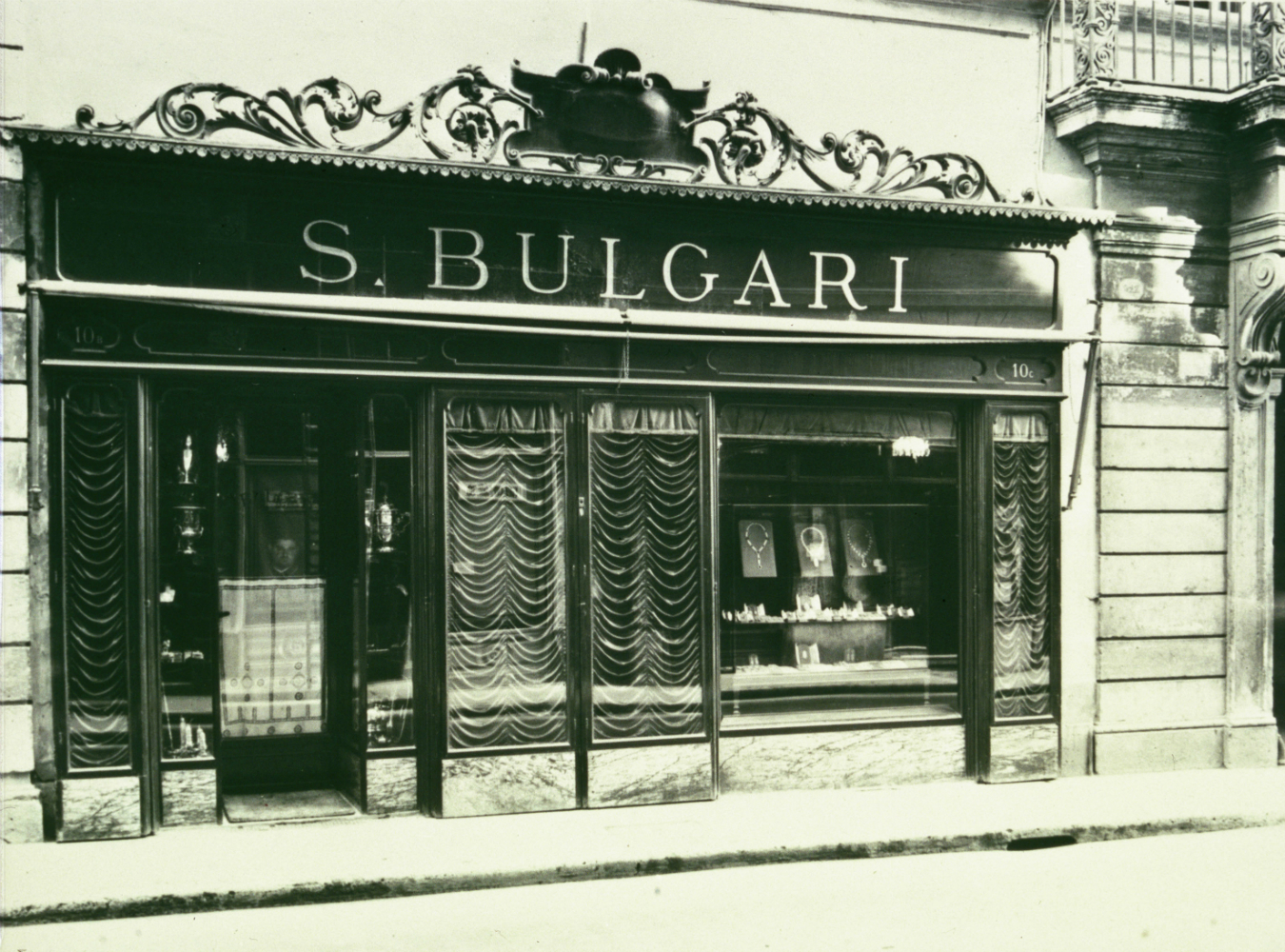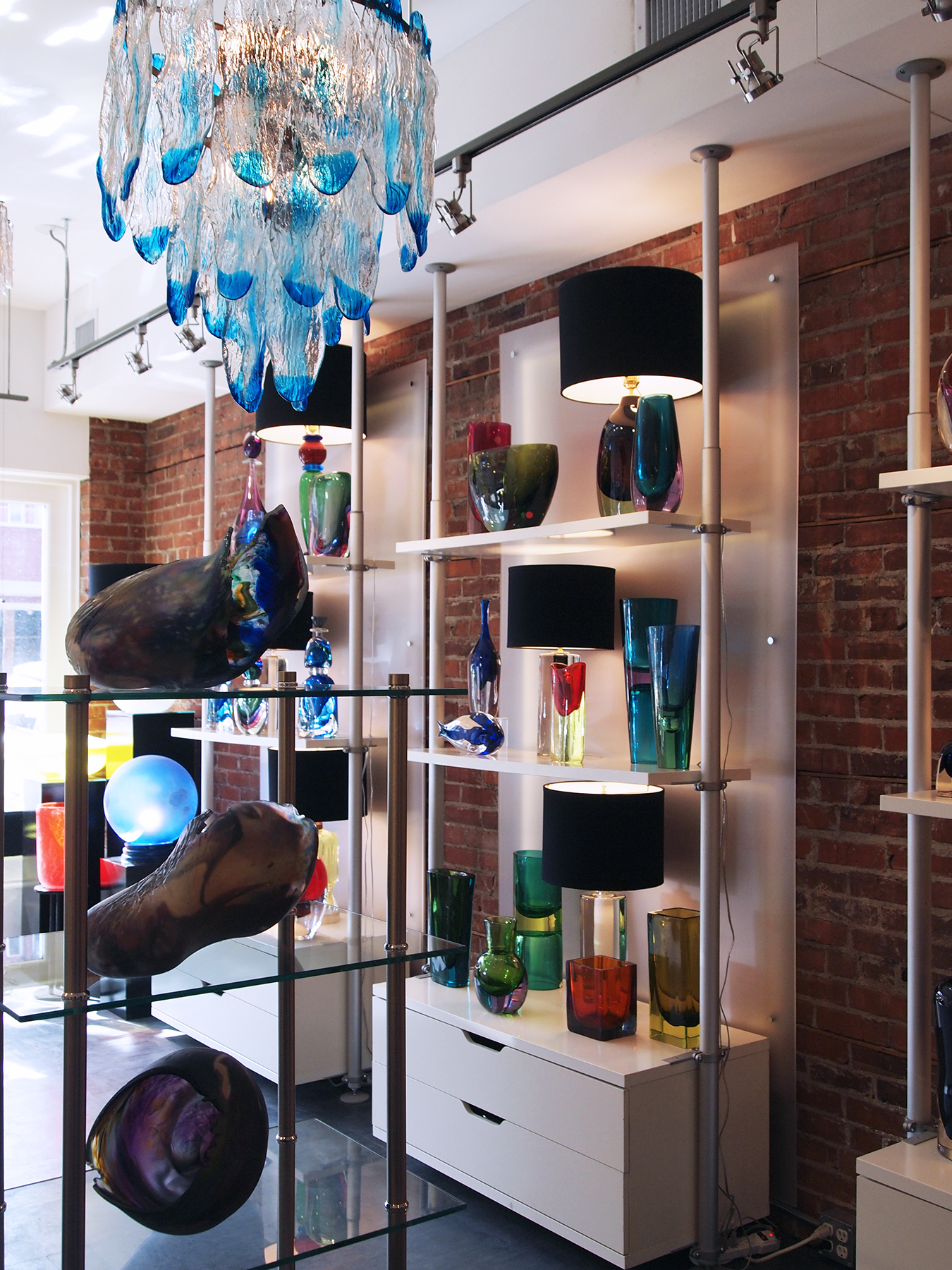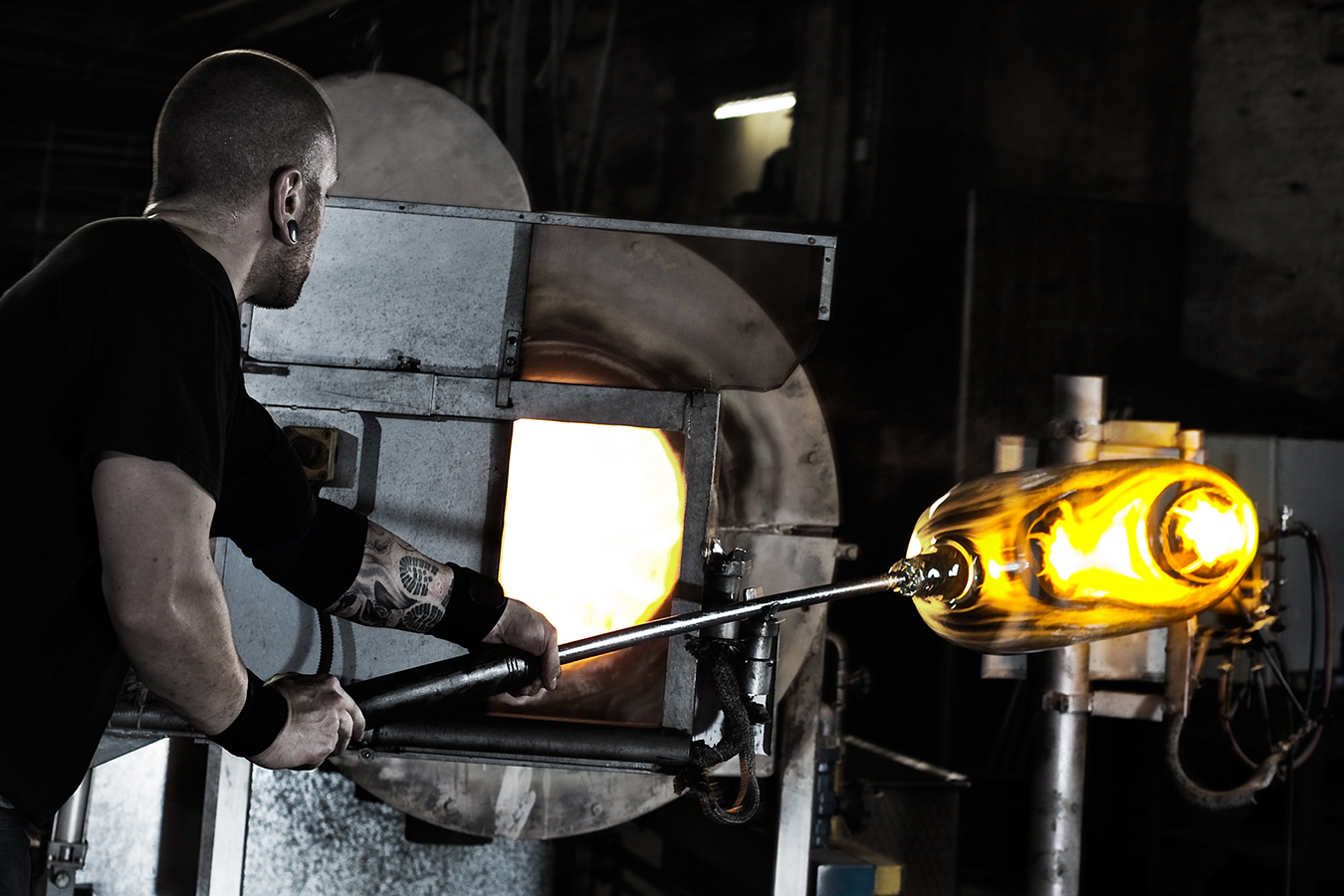-

Vetrate d’Arte Giuliani, located in Rome, boasts 117 years of artisanal stained-glass making.
-

Franco Galise, lead artisan at the Giuliani studio, demonstrates how the stained-glass techniques have remained unchanged over the years.
-

The cutting, laying, and welding are still done in the same way they were when the studio opened in 1900.
-

Stained glass works is a traditional art at risk of fading.
-

Vetrate d’Arte Giuliani is located in a large studio on Via Garibaldi in Rome’s Trastevere district.
Rome’s Vetrate d’Arte Giuliani
Glass works.
For more than a century, in a large studio on Via Garibaldi in Rome’s Trastevere district, the hands of masterful artisans have moved across glass like those of musicians playing their instruments. Here, at Vetrate d’Arte Giuliani, stained-glass windows make for masterful symphonies of colour. Cathedrals, churches, mosques, and palaces in Australia, the United States, Kuwait, Mexico, Brazil, and Saudi Arabia resonate with chromaticity produced by light, and glass made here.
Vetrate d’Arte Giuliani boasts 117 years of artisanal stained-glass making. Giulio Cesare Giuliani, a painter and chemist, founded the studio and devoted himself to the techniques of making windows. A repository of pieces from religious narratives to medieval scenes, geometrical compositions and art nouveau decorations, the business continued in the hands of family, passed down from father to son until the last Giuliani, Giulio, died in 1998. Today, Elsa Nocentini manages Vetrate d’Arte Giuliani, which she inherited from Giulio, her husband. “This is work of passion,” says the 60-something Nocentini. “A traditional art at risk of fading.” The Sistine Chapel, the private chapel of the Pope, and the Casina delle Civette museum are just some of the places in Rome where you can admire Giuliani pieces.
The Sistine Chapel, the private chapel of the Pope, and the Casina delle Civette museum are just some of the places in Rome where you can admire Giuliani pieces.
Franco Galise, lead artisan at the Giuliani studio, demonstrates how the stained-glass techniques have remained unchanged over the years. The cutting, laying, and welding are still done in the same way they were when the studio opened in 1900. “The only innovation is the oven,” says Galise, “the baking of the materials. All the other aspects of glass making are still ancient.” Each piece of glass—the best, hand blown and sourced in Germany—is selected for the desired colour, then cut by hand with a rotary blade. One minor deviation and the piece becomes garbage, tossed in a kaleidoscopic heap of discards. “Air bubbles indicate quality,” says Galise, holding a made-in-China piece of glass up to the light and comparing it to a first-rate made-in-Germany piece. “With lots of air bubbles, there is a transparency of light. Fewer bubbles, less transparency. The right glass is what gives the work life.”
Once the glass is cut (upwards of 250 pieces for some works), the pieces are assembled on a paper template and then slotted into lead divider bars before the joints are soldered together. When finished, the studio’s stained-glass works “are of a very strong structure,” affirms Galise. If there was any doubt, he points to a corner of the studio. “The owner of that work has asked us to store this, as her home in L’Aquila crumbled in the earthquake of 2009. There was no damage to the stained glass and until she rebuilds, she feels it’s safest with us.”
Vetrate d’Arte Giuliani, Via Garibaldi, 55/A, 00153 Roma RM, Italy.
_________
Never miss a story. Sign up for NUVO’s weekly newsletter.




